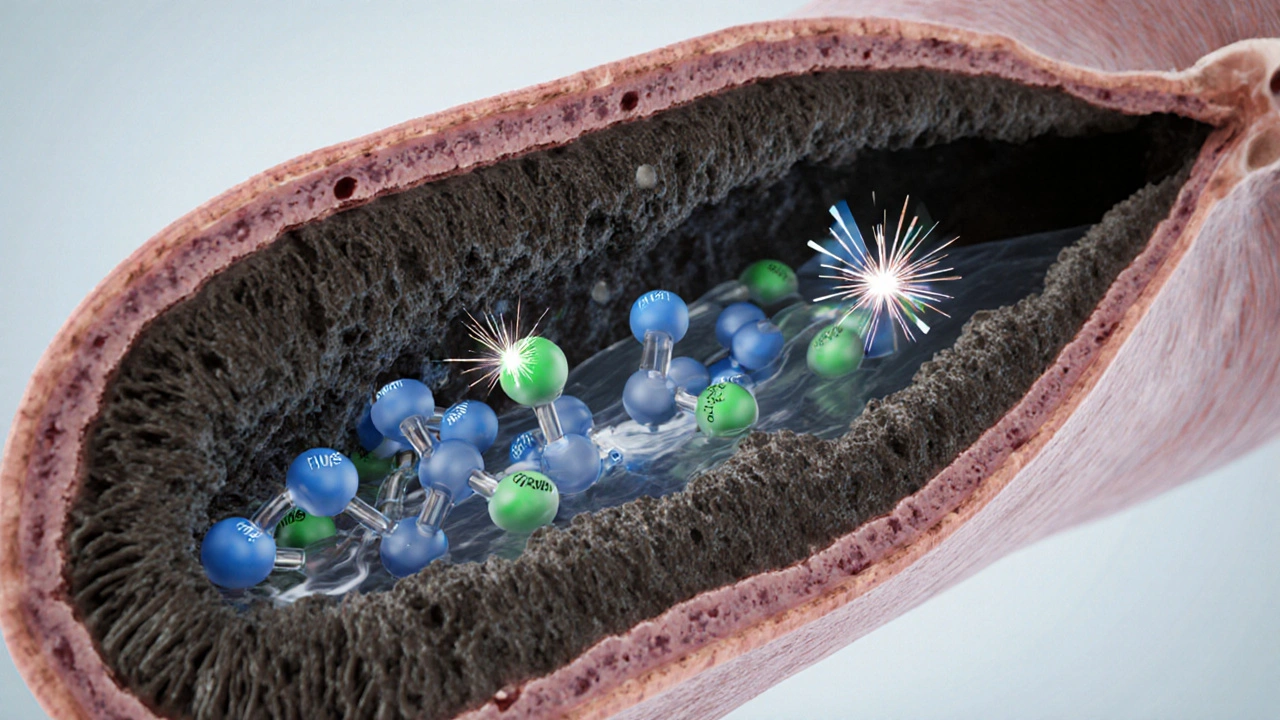Acetylcysteine: Uses, Benefits, and Safety Guide
When working with acetylcysteine, a medication and dietary supplement that acts as both a mucolytic and an antioxidant, commonly prescribed for respiratory issues and acetaminophen overdose. Also known as N‑acetylcysteine (NAC), it helps break down thick mucus in the lungs and replenishes glutathione, the body’s main antioxidant. The drug falls under the mucolytic class, a group of agents that thin airway secretions, making them easier to clear during coughing. At the same time, it serves as an antioxidant, protecting cells from oxidative stress by boosting glutathione levels. These three roles—mucolytic action, antioxidant support, and antidote for acetaminophen toxicity—form the core reasons many clinicians and supplement users turn to acetylcysteine.
Key Benefits, Practical Tips, and Common Questions
Acetylcysteine encompasses several practical uses that connect directly to everyday health challenges. First, its mucolytic property enables patients with chronic bronchitis, COPD, or cystic fibrosis to clear mucus more efficiently, which reduces coughing fits and improves oxygen exchange. Second, as an antioxidant, it helps mitigate liver damage caused by excessive alcohol, environmental pollutants, or high‑dose acetaminophen, because glutathione restoration curbs free‑radical injury. Third, in an emergency setting, a timed oral or IV dose of acetylcysteine can prevent severe liver failure after an acetaminophen overdose, a relationship highlighted in many clinical protocols. Dosage varies: adults typically take 600 mg – 1200 mg daily for respiratory support, while an overdose protocol may demand a loading dose of 140 mg/kg followed by maintenance doses over 72 hours. Side effects are generally mild—nausea, rash, or a brief metallic taste—but higher doses can cause gastrointestinal upset or, rarely, anaphylactoid reactions. When buying the supplement, look for reputable pharmacies or certified manufacturers, check expiration dates, and avoid products that list hidden fillers. The safety profile improves when the product is stored in a cool, dry place and taken with meals to reduce stomach irritation.
Below you’ll find a curated selection of articles that dive deeper into each of these angles. Whether you need a side‑by‑side comparison of acetylcysteine with other respiratory treatments, step‑by‑step safety checks for purchasing the supplement online, or detailed dosage tables for overdose management, the posts ahead cover the full spectrum. Use them as a practical toolbox to decide how acetylcysteine fits into your health routine, what to watch for, and where to find trustworthy sources.
Carbocisteine vs Alternatives: Best Mucolytic for Cough Relief
By Lindsey Smith On 9 Oct, 2025 Comments (16)

A detailed comparison of carbocisteine with acetylcysteine, ambroxol, bromhexine, and guaifenesin, covering mechanisms, dosing, side effects, costs, and how to choose the right mucolytic.
View More




